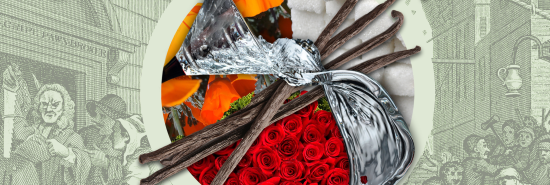
The unintended consequences of the gin tax
Eric Felten
Go back a few hundred years and you will find Americans were famous for the fanciful names they gave their even more fanciful drinks. There were such concoctions as the “fillip,” the “spur in the head,” the “phlegm-cutter,” and the “fog driver” — drinks that could be used to “moisten the clay” or “quench a spark.” But for a brief moment, the Brits back home outdid their colonial cousins in drink nomenclature.
It was a fad driven not by linguistic fancy but by taxation. And though efforts to trick the taxman were quickly seen through by those tasked with collecting revenue for the king, bar professionals in the New World weren’t quite so perspicacious. Consider the beverage known by the naughty nickname Cuckold’s Comfort. What could it possibly be?
DOCKWORKER TALKS THREATEN BIDEN WITH ANOTHER TOUGH DECISION BETWEEN LABOR AND ECONOMY
One could turn to the Bartender’s Guide of 1862 by Jerry “the Professor” Thomas, a sort of Rosetta Stone, unlocking mysteries of the bibulous past, a text carefully studied by those modern mixers of drinks who have fought to reestablish the cocktail as a touchstone of American culture. If you have paid $20 for a brandy crusta in the last decade, you have likely been in the presence of one of the Professor’s acolytes. And who’s to complain about the price of the Jerry Thomas-inspired drink when an original copy of the Professor’s book costs in the thousands?
The original book was not compiled for the home mixer. Indeed, in the Professor’s day, there wasn’t much in the way of making drinks at home. The Bartender’s Guide is just that: a guide for a professional bartender. As such, it includes a section of recipes, attributed to a distiller named Christian Schultz, for making industrial quantities of liqueurs and cordials. Included was a method for making Cuckold’s Comfort 10 gallons at a time.
The recipe is remarkable for its primary ingredient. You start with 4 1/2 pounds of fresh poppies. Mash them and let the crushed poppies soak in 4 gallons of grain alcohol for a week. Then you strain out the poppy mush, add a gallon of sugar syrup, a half-ounce of vanilla “essence,” and 24 drops of oil of roses dissolved in alcohol. Filter it, bottle it, and Bob’s your uncle.
I wouldn’t touch the stuff, nor, it seems, did much of anyone else because, elaborate recipe notwithstanding, there never was anything called Cuckold’s Comfort. It was a joke name, one of many that gained currency in 18th-century Britain, where gin-bibbers were doing their best to avoid the notorious gin tax.
As Charles Tennant put it in The People’s Blue Book: Taxation As It Is, and As It Ought To Be, “For six years, from 1736 to 1742, the metropolis was the scene of an almost uninterrupted conflict between the Government and the People” protesting the high excise tax imposed by the Gin Act. The gin-soaked masses of London found that the tavern keepers of London had a strategy for avoiding the tax. They would simply sell a product other than gin. It may have looked like gin; it may have smelled like gin; it may have tasted like gin; it might have been as intoxicating as gin. But the product was renamed, and then renamed again and again, all to dodge the tax man.
If you wanted gin, you went to a tavern and ordered Sangaree, Makeshift, or the Last Shift. Other names for the spirit that could not be named were Cholic Water, Gripe Water, the Balk, Bob, Tow-Row, Slappy Bonita, Madam Geneva, and King Theodore of Corsica. There was Ladies Delight and, yes, Cuckold’s Comfort.
I don’t know which I find more entertaining, 1) that Brits referred to plain old gin as Cuckold’s Comfort, or 2) that American bars, unaware of the tax-dodging joke, pretended to know the recipe for a liquor that didn’t exist.
CLICK HERE TO READ MORE FROM THE WASHINGTON EXAMINER
Eric Felten is the James Beard Award-winning author of How’s Your Drink?
